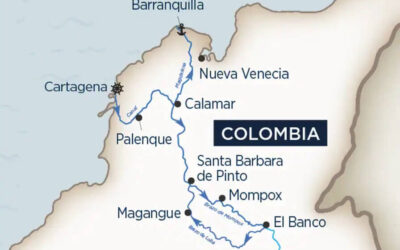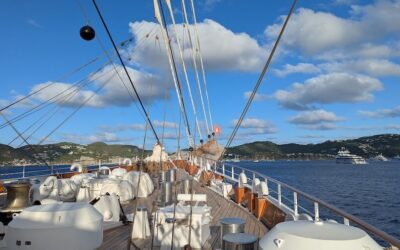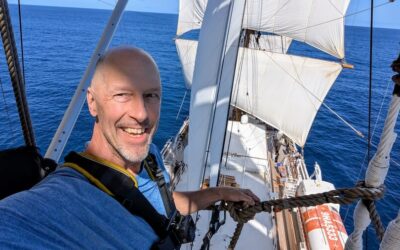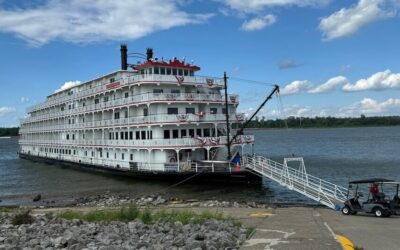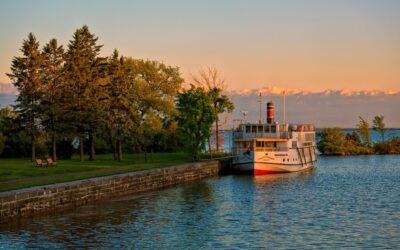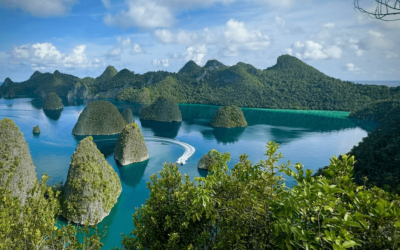Best Arctic Cruises to See Polar Bears
By Heidi Sarna
The Arctic season is just starting so we thought we’d go to straight to the source for some details on spotting polar bears.
Seeing a great big polar bear in the wild is a dream for many adventurous travelers.
There are questions of course.
Where exactly does one see polar bears? And is a cruise the best way to do it? If so, what kind of cruise?
We had an e-chat with Andy Marsh, co-founder of Secret Atlas, a small-ship cruise line that specializes in Arctic expeditions aboard hearty 12-passenger ships.
Andy told us more about Secret Atlas, his background (he’s seen many polar bears in his day!) and why Secret Atlas offers some of the best Arctic cruises to see polar bears.
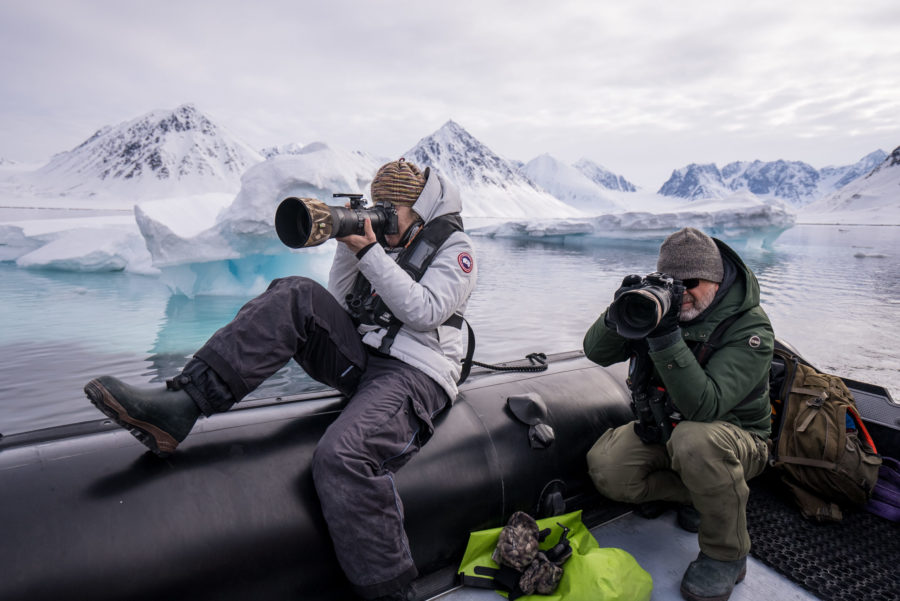
Taking photos of polar bears in Svalbard. * Photo: David Gonzalez
RELATED: Heidi shares more insights from Co-Founder Andy Marsh about Secret Atlas and their Arctic cruises.
Seeing Polar Bears in the Arctic
QuirkyCruise: Where are some of the best spots around Svalbard to see polar bears?
Andy Marsh: Polar bears live and roam throughout the Svalbard Archipelago and can be seen anywhere. During the summer months they are often hunting on Svalbard’s shores and on the remaining sea ice which retreats throughout the summer.
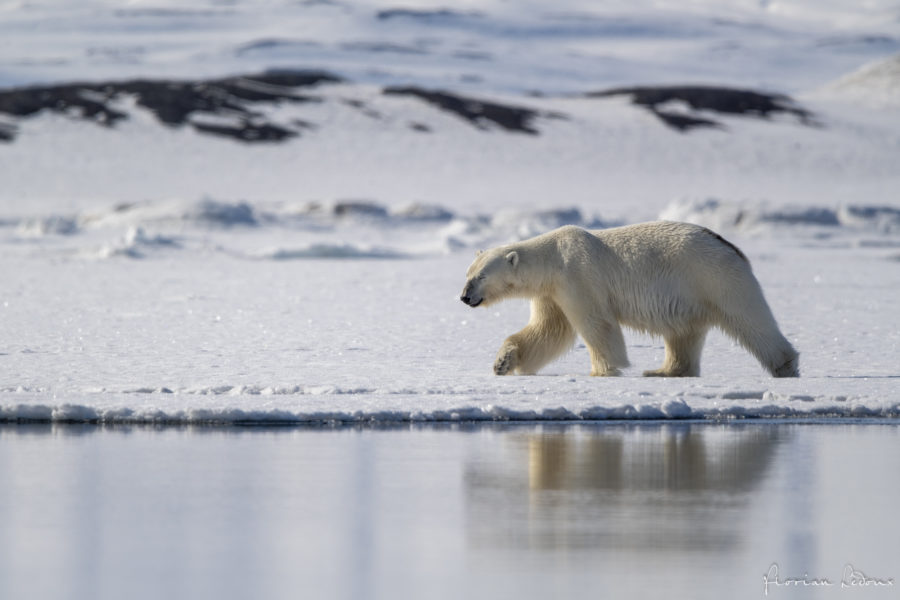
Spotting a polar bear at the ice edge. * Photo: Florian Ledoux
Some of the best places to see polar bears are in the north and far east of Svalbard. As polar bears are always on the move there is no one single good place to spot them and you always have to be on the look out.
We work with a team of highly experienced guides that are also excellent wildlife spotters.
Two of our top guides are John Rodsted (read more here) and Mette Elisuessen (here’s her bio).
Where is Svalbard Exactly?
Svalbard is an archipelago in the high Arctic, within the Arctic Circle, that belongs to the Kingdom of Norway.
It comprises nine main islands: Spitsbergen (the largest), Nordaustlandet, Edgeøya, Barentsøya, Prins Karls Foreland, Kvitøya, Kong Karls Land, Bjørn Island, and Hopen, plus a number of smaller outlying islands.
The total land area of Svalbard is 24,209 square miles.
Longyearbyen on Svalbard’s island of Spitsbergen is the largest settlement and where you’ll find the main international airport.
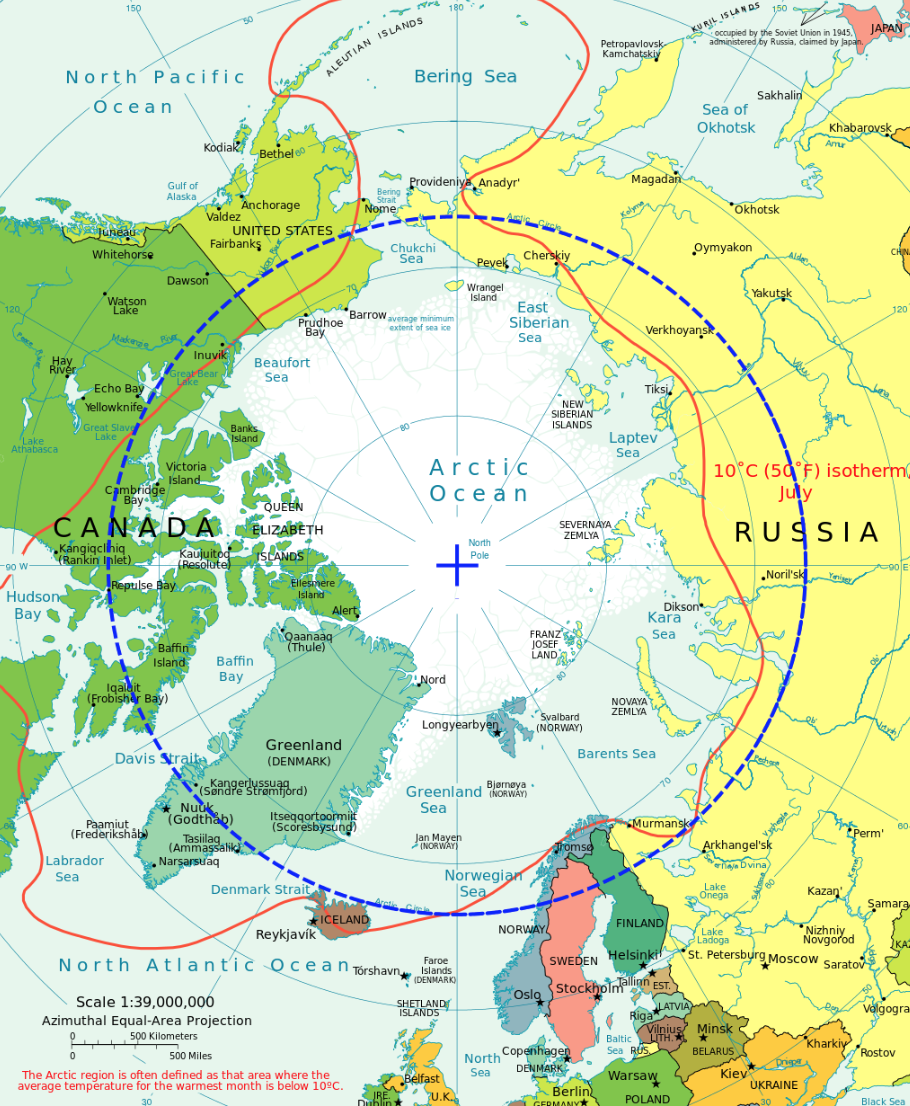
The Arctic Circle. * Image: CIA World Fact Book, Public Domain, https://commons.wikimedia.org/w/index.php?curid=7894803
QuirkyCruise: Please recount one of your polar bear sightings, what was it like?
Andy Marsh: I have been fortunate enough to encounter polar bears many times in Svalbard at different times of the year.
One of the most memorable was the first time I visited Svalbard. It was towards the end of May and we were cruising along a fjord in the northwest of Spitsbergen (Svalbard’s largest island).
It was around 3am in the morning when the expedition leader woke everyone up to the calls of “polar bear polar bear!”
I often joke you don’t go to Svalbard in the summer if you want to sleep.
It was a magical scene lit in bright sunlight (don’t expect the sun to set from May — August, the time the midnight sun is prevalent in the north). A large male polar bear was walking along the snowy shore.
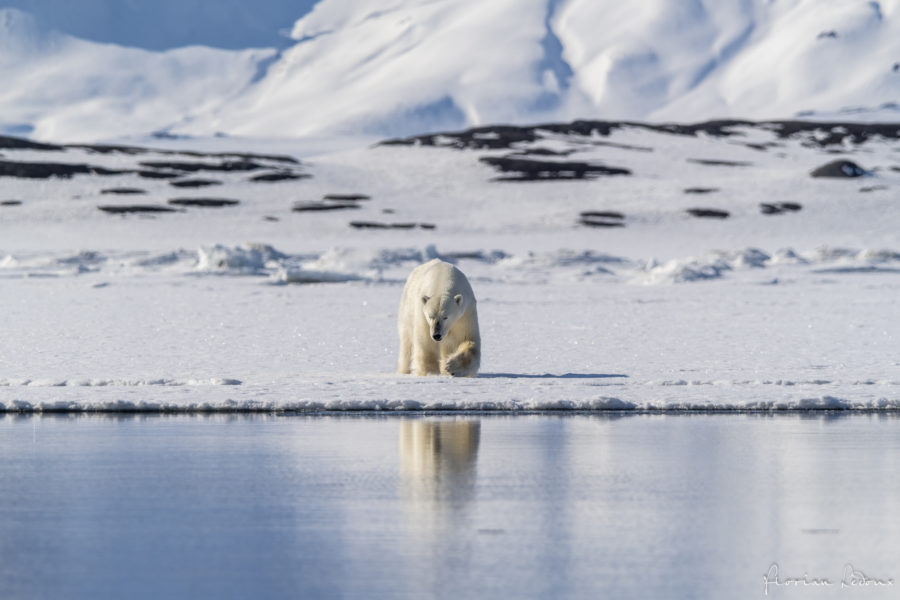
Spotting a polar bear at the water’s edge. * Photo: Florian Ledoux
We switched the engines off and drifted for around 20 minutes as the polar bear entered the water and swam past us completely unaware we there.
One of the beauties of a small ship is that we have a great deal of control and can ensure we don’t disturb the wildlife.
There is a great deal of respect involved.
RELATED: Secret Atlas wrote a useful guide to seeing polar bears in the Arctic.
Here is an Excerpt from the Secret Atlas Polar Bear Guide
Encountering polar bears: What to expect
It is much safer to encounter a polar bear on a vessel than on the shore.
If the expedition leader suspects there is a bear on the shore we will not land. Before every shore landing the guiding team will scan to ensure there are no polar bears sighted.
If a polar bear is sighted during a shore landing the guiding team will avoid getting anywhere close to the bear and instead get everyone back to the ship.
Viewing a polar bear from the vessel is a much safer experience, and allowing for separation between the ship and the bear so as not to disturb it.
It is the job and responsibility of the expedition leader and captain to ensure a safe distance is maintained at all times and that we do not cause the bear any disturbance.
When encountering polar bears we follow a strict set of guidelines from AECO which you can see here.
- Never approach a swimming bear from any angle.
- Never feed, disturb or lure a polar bear.
- Never approach closer than 200 meters with an expedition vessel.
More advice for polar bear watching
- It is rare you will ever see a polar bear very close. We recommend bringing a good pair of binoculars. If you are a photographer, a long telephoto lens is needed with 300mmm being the minimum.
- When a polar bear is in sight do not make any sounds or sudden movements that could scare the polar bear. Polar Bears are attracted to the human voice, so do not speak. Often polar bears are curious, and it is important to not do anything that can provoke the bear.
- Be patient. This is the wilderness. Encountering polar bears can take time and perseverance.
- Spend time on deck keeping a lookout.
- Keep yourself warm with clothing and hot drinks.
QuirkyCruise: Your season runs from late April to late September. What are the pros and cons of cruising the Arctic in the earlier part of season vs late?
Andy Marsh: There is never a better time to visit the Arctic as all the seasons offer something unique.
Early in the season, in April and May, there is lots of sea ice and frozen landscapes. The routes we take are shorter and offer the perfect time for our photography expeditions.
June to August is great for wildlife and for exploring the further parts of Svalbard under the midnight sun.
September offers gorgeous light as the long sunrises and sunsets return.
Ted Scull Gives Us a Quick Geography Lesson
The Arctic is a region just above the Arctic Circle. It’s not a continent.
Its span across the Northern Hemisphere is remarkably long. A few itineraries visit an area that begins in remote northern Russia (Franz Josef Land) and slides west to northern Finland, Sweden and Norway — all attached to the European continent.
After that it’s all islands.
The main islands are Spitzbergen, the largest one in the Svalbard archipelago (a Norwegian possession), and Greenland (a self-governing Danish possession) above the Arctic Circle.
Iceland falls almost entirely just below the Arctic Circle, with just a tiny northern tip officially within the region. And because the island is included in many Arctic itineraries, it will be included here.
West of Greenland, the Arctic Circle slices across northeastern Canada and encompasses the northern sections of Nunavut Territory, officially created in January 2000, from roughly the eastern half of the North West Territories, then continues across the NWT, Yukon Territory and Alaska into the Bering Sea with Siberian Russia on the opposite side.
Much of the northern Canadian portion is made up of islands, and the main channel through the archipelago is the famed Northwest Passage. A few Arctic itineraries enter this passage via Lancaster Sound to call at Inuit communities on Baffin and Devon islands. The full-length passage is for another day, and its high cost makes it available to so few.
The land within the Arctic region has seasonal snow and ice cover and is mainly treeless permafrost and tundra. Ice is present seasonally and may close the passage to navigation in winter.
Some expedition ships with substantial power to achieve a high level of icebreaking capabilities can reach the geographic North Pole during a relatively brief period of the northern summer.
Read more HERE.
QuirkyCruise: Why did you & Michele start Secret Atlas, to bring micro cruising to the Arctic? Did you feel the small ships doing Arctic cruises were too big, even at a few hundred pax?
Andy Marsh: Coming from a sailing expedition background we always valued the experience of exploring in a small group. Exploring in a group of 12 offers a great deal of flexibility that is lost on larger ships.
Small groups offer a much lower impact on the environment and when ashore our impact is next to none in comparison to large expedition ships that are landing 300 guests at a time at sensitive landing sites.
For our guests they get to see more, with more landings and Zodiac cruises per day than on a large ship. It gives us a great deal of flexibility to encounter wildlife.
If we see a polar bear, we can have all our guests in a Zodiac in 15 minutes to get a closer encounter.
This is something that is not possible on larger ships.
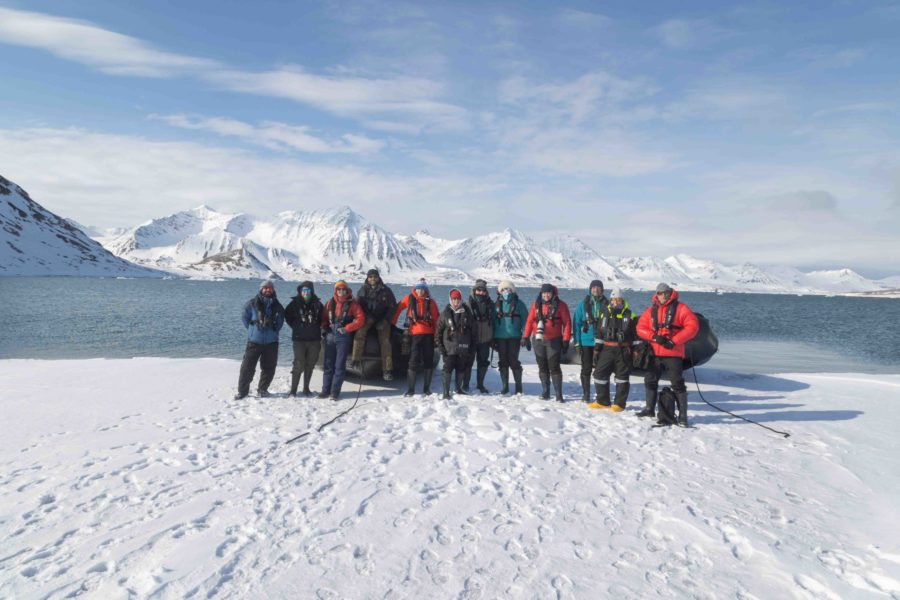
Group photo of all guests and guides on a Zodiac landing in Svalbard. * Photo: Andy Marsh
QuirkyCruise: You talk a lot about Secret Atlas offering a more sustainable Arctic cruise, what exactly do you mean?
Andy Marsh: A group of 12 in just two Zodiacs creates a much smaller footprint than a larger ship landing groups of 200 or 300 in sensitive environments, in terms of impacting the landscape, creating noise pollution and disturbing wildlife.
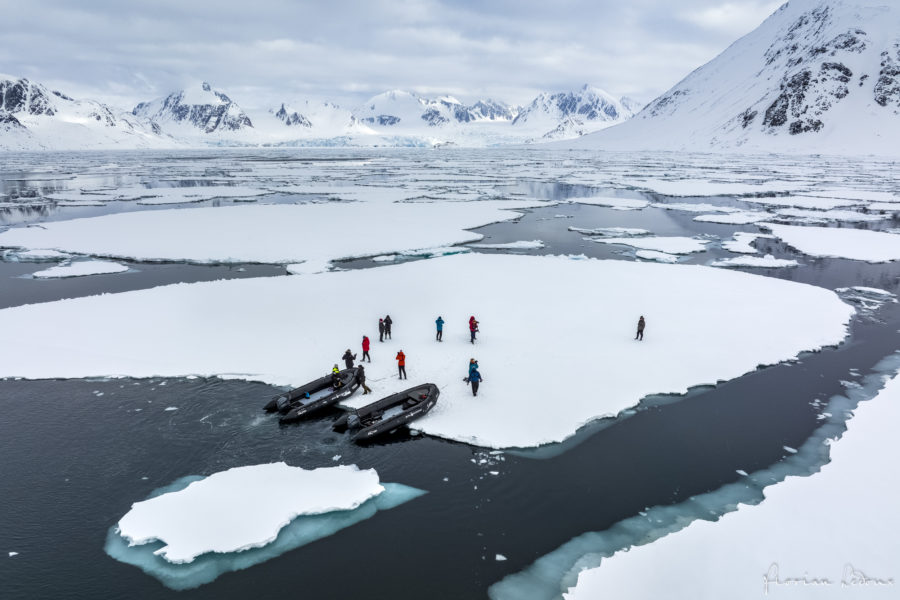
The 2 Zodiacs take guests to ice flows in a Svalbard fjord. * Photo: Secret Atlas
We really push ourselves to ensure we operate in the most sustainable way possible.
Arctic vs Antarctic — A Comparison
Yes, they’re both icy and cold, but there are vast differences between an Arctic and an Antarctica cruise. For instance, you can only see polar bears in the Arctic.
Quirky’s Ted Scull worked on this handy table to show the main differences between an Arctic cruise and one to the Antarctic. You can also read about the differences here.
| ARCTIC Svalbard, Iceland, Greenland, Canadian Arctic | ANTARCTICA | |
| Season | June, July & August | Nov, Dec, Jan & February |
| Weather | Mostly above freezing in the summer up to 60Fs on land. Wind makes it feel colder, possible rough sea days | Freezing levels up to the 40Fs. Beautiful clear blue-sky days; gray days; possible rough weather crossing Drake Passage |
| Wildlife | Birds, polar bears, seals, walrus, whales | Birds (especially albatross), several species of penguins, seals, walrus, whales |
| Overall Scenery | Ice & some snow, fjords, glaciers (Greenland), rugged terrain, tundra, wildflowers, some forests | Ice & snow covers Antarctica, except northern portion of Antarctic Peninsula in summer months. Massive-to-minuscule floating and rooted ice formations |
| Landscape Highlights | Glaciers, iceberg-choked fjords, geysers (Iceland), Northern Lights, spring flowers on some landscapes | Giant icebergs (some colors), ice calving, rugged ice fields |
| Culture | Inuit and European communities & culture, fishing villages, ancient ruins, former whaling stations | Remnants of past explorers (ie Shackleton) & abandoned research stations; today’s research stations (possible visits); Falklands — villages, farms |
| Cruising Challenges | Possible rough seas, windy conditions | Drake Passage sea conditions, cold if windy |
Does an Arctic Cruise Sound Like Something You’d Love?
Now that you know more about the best Arctic cruises to see polar bears, maybe you want to take one yourself.
If so, we’re happy share an exclusive QuirkyCruise discount from Secret Atlas.
HERE are more details about booking an Arctic Secret Atlas cruise.
Don’t miss a post about small-ship cruising, subscribe to QuirkyCruise.com for monthly updates & special offers!
© This article is protected by copyright, no part may be reproduced by any process without written permission from the author. All Rights Reserved. QuirkyCruise.com.
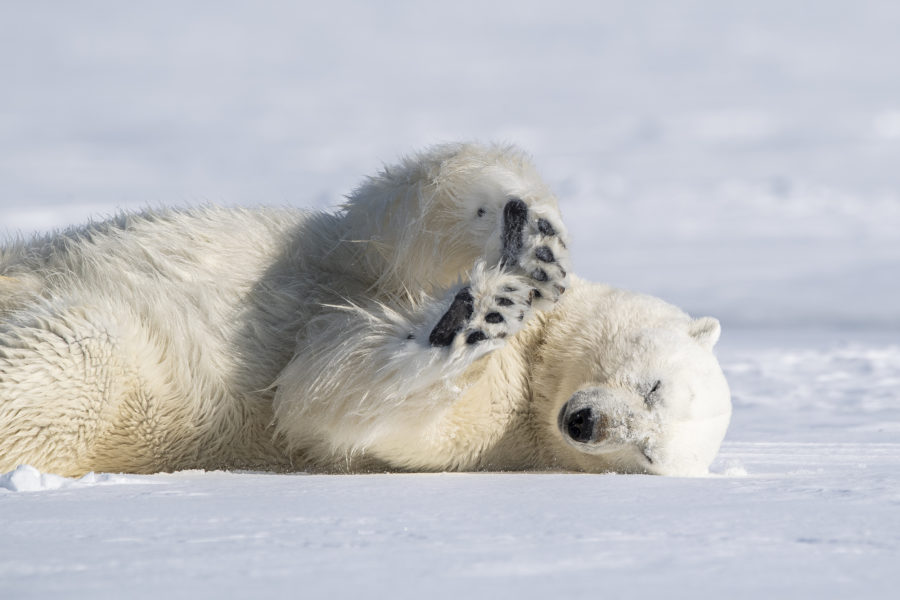
A polar bear playing in Svalbard. * Photo: Florian Ledoux
Don’t miss a post about small-ship cruising, subscribe to QuirkyCruise.com for monthly updates & special offers!
© This article is protected by copyright, no part may be reproduced by any process without written permission from the author. All Rights Reserved. QuirkyCruise.com.

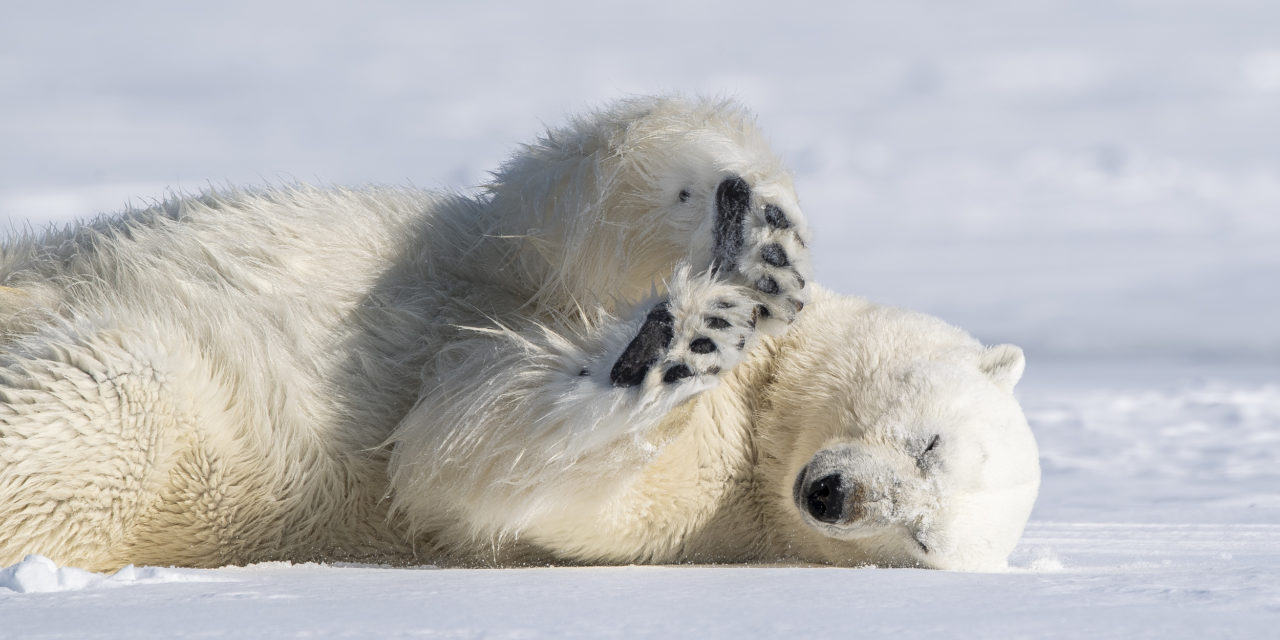
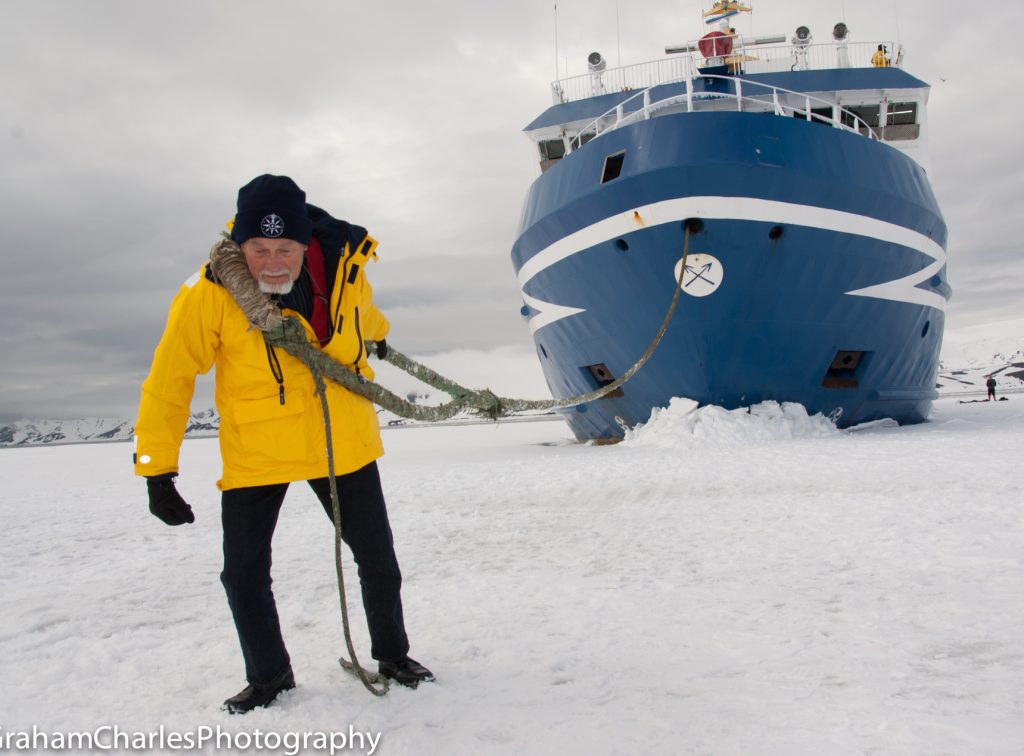
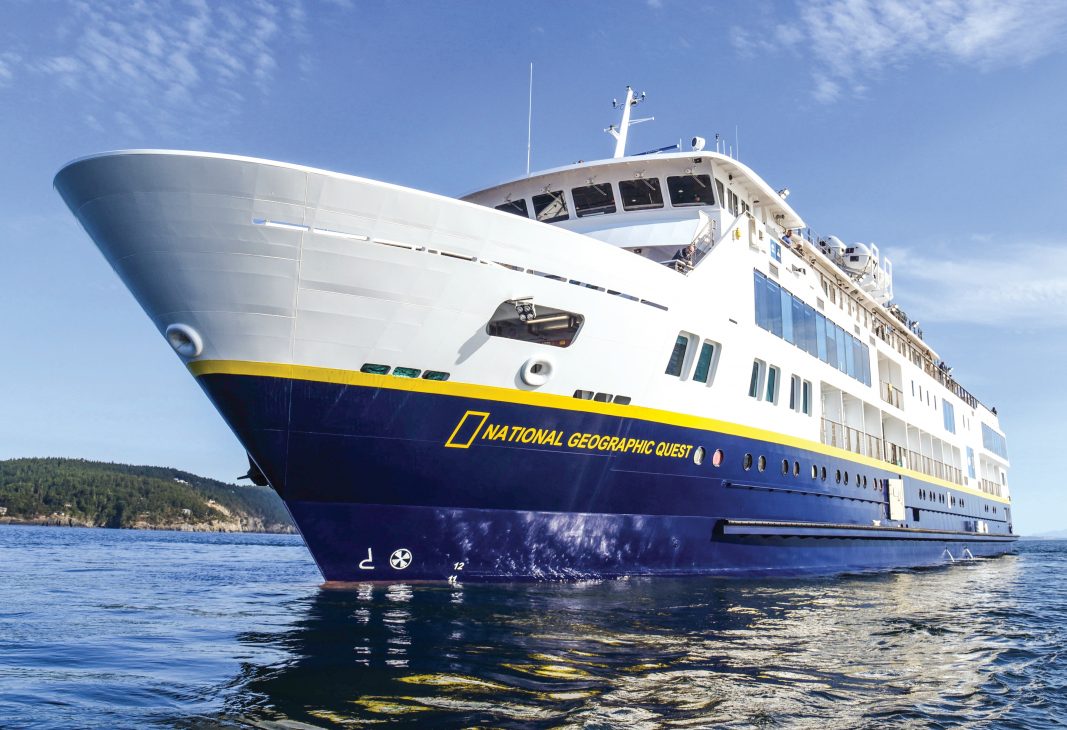

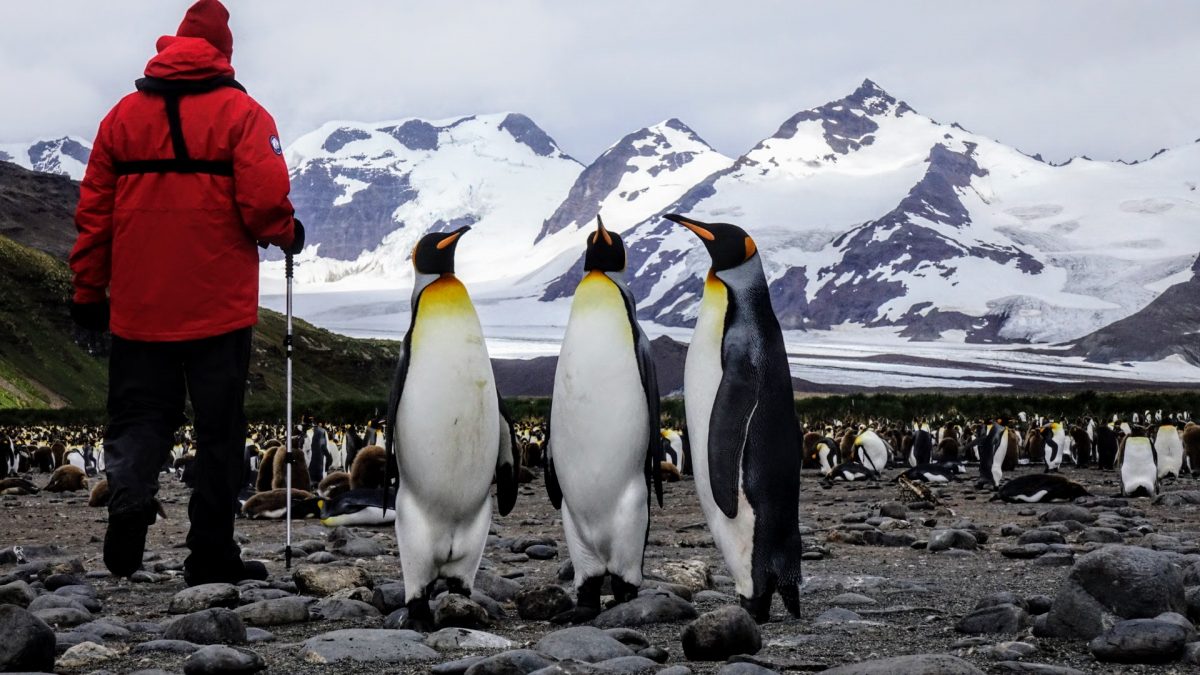
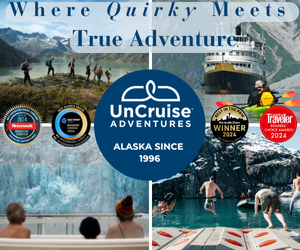
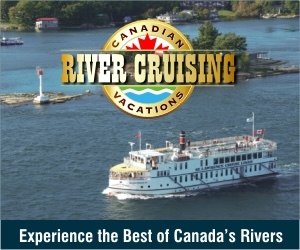

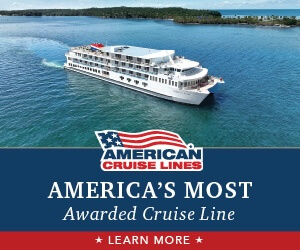




 HEIDI SARNA
HEIDI SARNA



